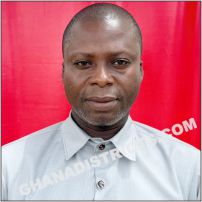

It can also be seen that majority of the people across all the ages (11years and older) have a high level of literacy in English and Ghanaian language. The population between 11-14 years reported the highest English Language only literacy of 44.3 percent but the least with regards 29 to English and Ghanaian language (48.2%). This possibly reflects the lack of serious attention to the teaching of Ghanaian languages in Basic schools.
The trends are generally in favour of males over females. For instance, out of a total of 20,136 of those who are currently attending school, 53.4 percent are males with 46.6 percent females. However, at the secondary school level about twice of males (7.6%) as against females (4.7%) are currently attending. Also, compared to females (0.2%), more than fourfold of males are currently attending a tertiary institution in the district. This situation suggests that despite the recent campaign by government and civil society for gender parity in school significant gaps still exist in rural districts such as the Bodi District. Indeed, there is the need for the Bodi District Assembly, traditional authority, NGOs, etc to intensify campaign to promote girl-child education through measures such as the provision of scholarships to promote education among females in the district.
The trend does not change when school attendance in the past is considered. Approximately 6 out of every 10 (57.9%) of the population that has attended school in the past is a male. The rest is the share of females.
Again, whereas around 2.2 percent of males have attended a tertiary institution in the past, less than one percent (0.4%) of females have done so.
It can also be seen that majority of the people across all the ages (11years and older) have a high level of literacy in English and Ghanaian language. The population between 11-14 years reported the highest English Language only literacy of 44.3 percent but the least with regards 29 to English and Ghanaian language (48.2%). This possibly reflects the lack of serious attention to the teaching of Ghanaian languages in Basic schools.
The trends are generally in favour of males over females. For instance, out of a total of 20,136 of those who are currently attending school, 53.4 percent are males with 46.6percent females.
However, at the secondary school level about twice of males (7.6%) as against females (4.7%) are currently attending. Also, compared to females (0.2%), more than fourfold of males are currently attending a tertiary institution in the district. This situation suggests that despite the recent campaign by government and civil society for gender parity in school significant gaps still exist in rural districts such as the Bodi District. Indeed, there is the need for the Bodi District Assembly, traditional authority, NGOs, etc to intensify campaign to promote girl-child education through measures such as the provision of scholarships to promote education among females in the district.
The trend does not change when school attendance in the past is considered. Approximately 6 out of every 10 (57.9%) of the population that has attended school in the past is a male. The rest is the share of females. Again, whereas around 2.2 percent of males have attended a tertiary institution in the past, less than one percent (0.4%) of females have done so
Date Created : 11/20/2017 2:47:02 AM









 facebook
facebook
 twitter
twitter
 Youtube
Youtube
 +233 593 831 280
+233 593 831 280 0800 430 430
0800 430 430 GPS: GE-231-4383
GPS: GE-231-4383 info@ghanadistricts.com
info@ghanadistricts.com Box GP1044, Accra, Ghana
Box GP1044, Accra, Ghana